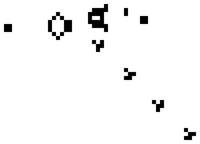
Photo from wikipedia
Robustness in developing and homeostatic tissues is supported by various types of spatiotemporal cell-to-cell interactions. Although live imaging and cell tracking are powerful in providing direct evidence of cell coordination… Click to show full abstract
Robustness in developing and homeostatic tissues is supported by various types of spatiotemporal cell-to-cell interactions. Although live imaging and cell tracking are powerful in providing direct evidence of cell coordination rules, extracting and comparing these rules across many tissues with potentially different length and timescales of coordination requires a versatile framework of analysis. Here we demonstrate that graph neural network (GNN) models are suited for this purpose, by showing how they can be applied to predict cell fate in tissues and utilized to infer the cell interactions governing the multicellular dynamics. Analyzing the live mammalian epidermis data, where spatiotemporal graphs constructed from cell tracks and cell contacts are given as inputs, GNN discovers distinct neighbor cell fate coordination rules that depend on the region of the body. This approach demonstrates how the GNN framework is powerful in inferring general cell interaction rules from live data without prior knowledge of the signaling involved.
Journal Title: PLoS Computational Biology
Year Published: 2022
Link to full text (if available)
Share on Social Media: Sign Up to like & get
recommendations!